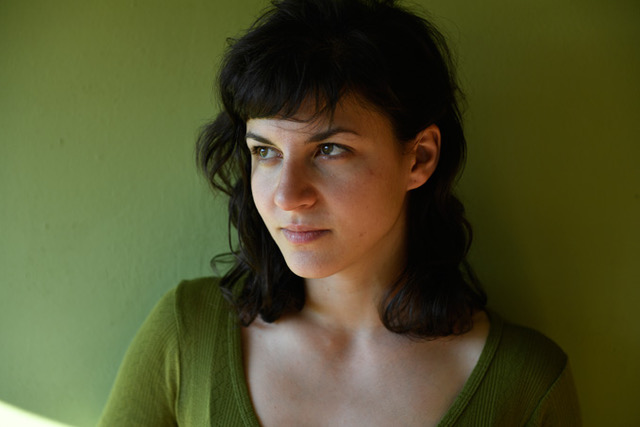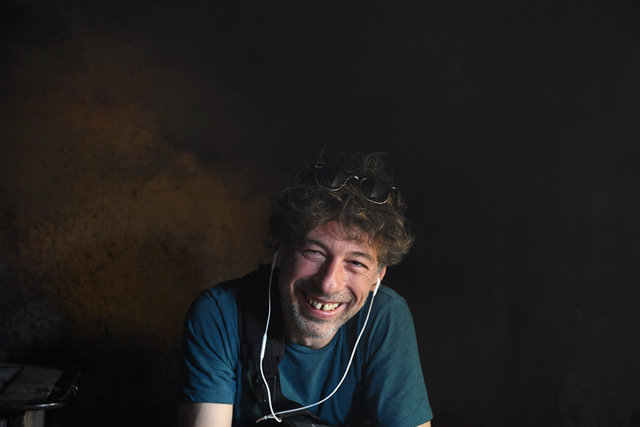DN:Interview: Tamara Kotevska and Ljubo Stefanov
In HONEYLAND, Hatidze Muratova is a Macedonian mountain woman with the face of a craggy Margaret Hamilton and a spirit of peerless pluck. She harvests honey from beehives as her livelihood, while tending to her blind, sick mother in a rustic shack. Her new neighbors are more than exasperating, and she views them, and environmental concerns, as threats to her precious beekeeping ways. The doc has won 11 festival awards, including three this year at Sundance, many of them singling out the ravishing cinematography. We spoke by phone to the film’s directors, Ljubo Stefanov and Tamara Kotevska. These are excerpts of our conversation:
DN: Where in the world did you find your leading lady, Hatidze, and how did you know she would be the one to guide your story?
Ljubo Stefanov: While we were finishing our previous film, we got a tip from our agency for a certain environmental project. We started to do research and our task was to find a subject in this (Macedonia) area for a short documentary. But soon after that we discovered the village with Hatidze inside, and it was clear that she would lead our story, which was supposed to be a couple months of filming and editing. But it turned to one year of filming, then three years of filming. A complicated process, but the result probably justifies it.
DN: How did you locate the film’s story with such wide-open choices?
LS: There are two aspects. One is humanistic, the relations between characters. And the other one is the environmental message of the film. Before Hatidze is going to the city to sell the honey, she is taking the honey and she is talking to the bees, “Help for me, help for you.” We filmed that during the first week of shooting, and it was clear that this very strong motto would underline the film. It’s about users and providers. Users are human in many cases, the bees providers, the natural resources. The environmental message in this very simple story is about overusing natural resources.
DN: How did the narrative evolve? Was it supposed to be a story about this solitary beekeeper and then suddenly this disruptive family moves in next door? Did you expect that to happen?
Tamara Kotevska: This story unfolds a lot over time. It started as something completely different. When we found her and started working with her we were still wondering if the form of this film should be more just a portrait of her. We realized that this would not be the film we want. We wanted to actually create a stronger story from her, not just a portrait. The nomad family came but we didn’t pay any attention to them, until we found out that they were the crucial part of the conflict in her life. It was crucial for us to find a way to bring them into the film because they make up a huge part of her life.
DN: How would you describe your heroine Hatidze? To me, she is plucky, resourceful, lonely …
TK: She is a miracle. Anybody who’s met her says you’ve never met anyone similar, because going to this place, everything is completely lifeless, time is completely different, everyone walks very slowly. Even when we went there, our energy just went down. It’s shocking to see her, the only person who spent her life there, and she has the most energy, most spirit. She’s completely open to people, she’s an extrovert and loves being seen and to talk to people. She’s a star.
DN: How would you characterize Hatidze’s relationship with her ailing mother?
LS: It’s a very complex relationship. In Hatidze’s tribe, the last-born female must stay to take care of the parents. So that’s her destiny, to devote her life to take care of her mother. It’s very relative if this is a good relationship. It’s obvious in the film that the mother is very manipulative.
DN: The cinematography has been getting lavish attention and won many awards. How important was it to have such lush, observant camerawork for a film like this?
LS: We were a filming crew of four — two cinematographers and two directors. We filmed with DSLRs (digital cameras) with simple photographic lenses, with no filters or additional light, and cheap microphones mounted on the cameras. There is nothing spectacular with the equipment. But obviously the skills of the cinematographers (Fejmi Daut and Samir Ljuma) and the will for bringing the goods were crucial parts of such visual quality. Also, we don’t understand Turkish, so we were filming based on the visual activities, so great visuals were important. We did the first three or four months of editing on mute.
DN: Lastly, what are some recent documentaries you especially like and could recommend?
LS: One for sure is “Midnight Family,” which is about a family in Mexico that runs a private ambulance business. Really, really touching and a really great story. It was in Sundance. “Sea of Shadows” is another. And an Israeli film called “Advocate” about a female Israeli lawyer who defends Palestinians. It was also at Sundance.


